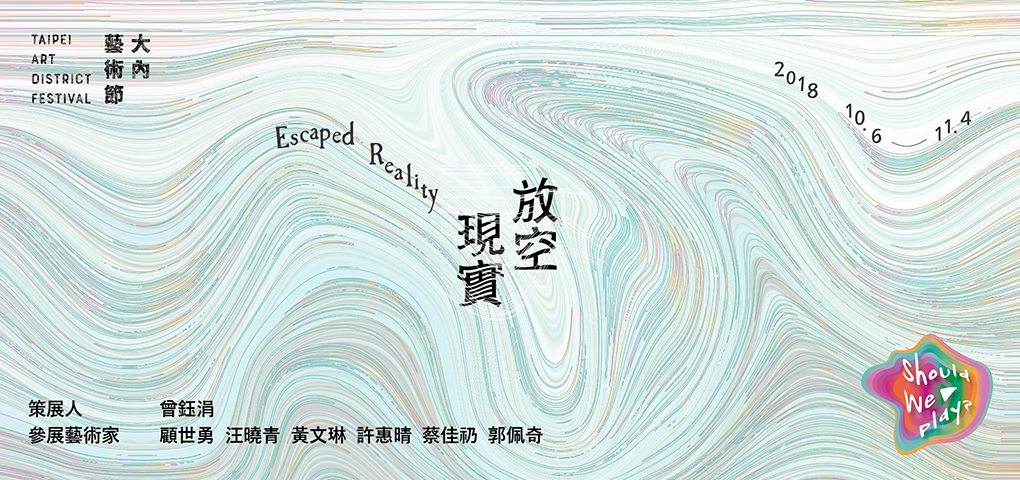
28 Nov Taipei Art District Art Festival “Should We Play? – Escaped Reality”
Should we Play?
Writen by/ Curator: Yu-Chuan Tseng
“Play” is to take part in a game or to activate.
“Should we Play?” That is the question.
During a typhoon, adults are worried about the possible damage caused by the storm but kids always find their way to play with shadows by the candlelight in the darkness, creating their own stories and fantasies of monsters. “Play” is the happy experience we all had in our childhood, but as we grew up, we have gradually lost the ability to play.
What do we “play?” The answer varies with the passage of time and the development of technology, starting from tangram, hopscotch, and playground slide to digital games, virtual reality, and social media in today’s world. Clicking the “PLAY” button in the digital age, we are led into the world of fantasy which is activated by spoken words or button switches as magical as Ali Baba’s “open sesame.” However, “play” is often regarded as some addictive vice that weakens the will. We are addicted to the pleasure offered by digital devices and blending our real lives with virtuality, by doing so we find comfort in the co-exiting play and life.
Should we play?
According to the psychoanalyst Donald Woods Winnicott’s research on child development and psychology in his Playing And Reality which was published in 1971, “playing” makes both children and adults creative and allows them to manifest the personality as a whole. Only with creativity that it becomes possible for an individual to discover oneself, for that creativity enhances the belief that “life is worth living.” Although the “play” in Winnicott’s research is centered on the mother-baby relationship, meaning the activities in traditional playing spaces, the “potential space” materialized with the activity of playing, as how Winnicott explains it, functions as the necessary playground between the external reality and inner reality for each individual whose mind is always occupied by everyday life. Like what Friedrich Schiller has mentioned in his On the Aesthetic Education of Man, “it is only play that renders man complete and develops his double nature,” and here “play” indicates an approach toward spiritual freedom.
In reality, each one of us is forced to turn ourselves into a small component in the machine named “society” and to take the responsibility in accordance with our social class and identity. It is only through play, in terms of activity and state of mind, that we are given the possibility to free our souls and to have a moment of relief when being trapped in the unescapable reality of the outside world. The mind is thus released with emotional pleasure, bringing us a more creative attitude in life.
Perhaps the question should be “why shouldn’t we play?”
The exhibition features four subtopics: 1.) Transitional Mirage: Returning to the memories of play to evoke the hidden space through the splendid imaginary world as a way to respond to the void in the mixed-up reality; 2.) Memory As Object: Retrieving the transitional object from the hidden space, which, as the basic character to build a memory or game on, is being forgotten and becomes the floating memory with the passage of time; 3.) Escaped Reality: Examining an individual’s responsibility when one deals with the reality, including how one should adjust or empty out one’s emotions to bring back the imagination of play and to preserve one’s memories; 4.) Flickering Moment : Recollecting one’s childhood memory which echoes the digital-age landscape of technology through the sounds and sparkles from light, shadows, and mechanical structures.
Should we Play? By discussing the memories of “play,” we hope to bring back the expectation and imagination of “play.”